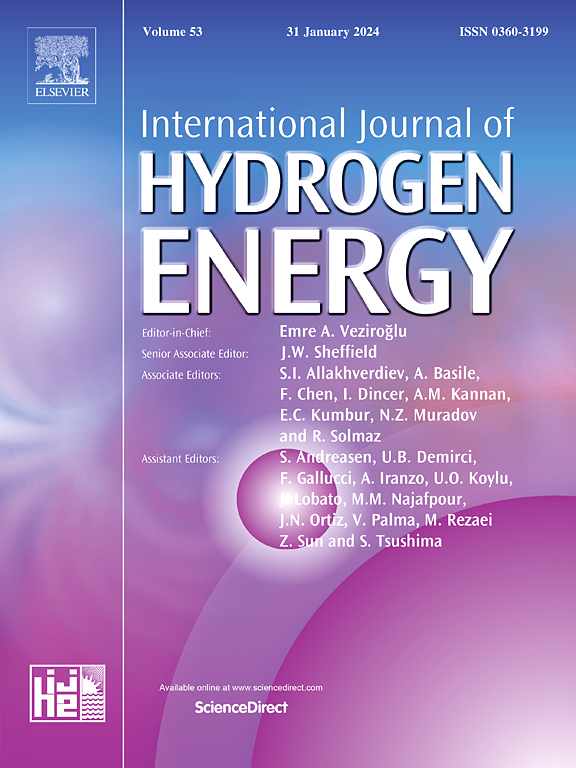Hydrogen storage minimization under industrial flexibility constraints: A techno-economic analysis of off-grid green ammonia production
IF 8.1
2区 工程技术
Q1 CHEMISTRY, PHYSICAL
引用次数: 0
Abstract
Electrifying ammonia production using renewable energy (RE) and water electrolysis is a critical step in the worldwide transition from fossil fuels to alternative energy sources. However, the common requirement that the ammonia reactor operate at a steady production level harms the system’s economic feasibility due to the large hydrogen and battery storage required to overcome RE variability. In this study, we examine the sensitivity of the plant storage capacity requirement to the flexibility of the ammonia reactor. We examine two aspects of ammonia reactor flexibility: ramping rate flexibility and the range of operation (turndown flexibility). We develop a storage dispatch and ammonia reactor scheduling optimization, which computes the minimum storage requirement given a RE generation profile and set of reactor flexibility parameters. We optimize across a sweep of flexibility parameters for two locations in the United States. We find that turndown flexibility is the most important, while ramping flexibility has little effect on the overall storage requirement. Further, we see that seasonal variability in the RE generation profile is the primary driver of high storage capacity requirement. We find that with a turndown flexibility of 60% of the ammonia plants rated capacity, which is understood to be achievable with existing ammonia reactor technology, the storage capacity was reduced by 84 % in one of the locations we examined, which resulted in a 22% decrease in the levelized cost of ammonia with pipe-based hydrogen storage.
求助全文
约1分钟内获得全文
求助全文
来源期刊

International Journal of Hydrogen Energy
工程技术-环境科学
CiteScore
13.50
自引率
25.00%
发文量
3502
审稿时长
60 days
期刊介绍:
The objective of the International Journal of Hydrogen Energy is to facilitate the exchange of new ideas, technological advancements, and research findings in the field of Hydrogen Energy among scientists and engineers worldwide. This journal showcases original research, both analytical and experimental, covering various aspects of Hydrogen Energy. These include production, storage, transmission, utilization, enabling technologies, environmental impact, economic considerations, and global perspectives on hydrogen and its carriers such as NH3, CH4, alcohols, etc.
The utilization aspect encompasses various methods such as thermochemical (combustion), photochemical, electrochemical (fuel cells), and nuclear conversion of hydrogen, hydrogen isotopes, and hydrogen carriers into thermal, mechanical, and electrical energies. The applications of these energies can be found in transportation (including aerospace), industrial, commercial, and residential sectors.
 求助内容:
求助内容: 应助结果提醒方式:
应助结果提醒方式:


